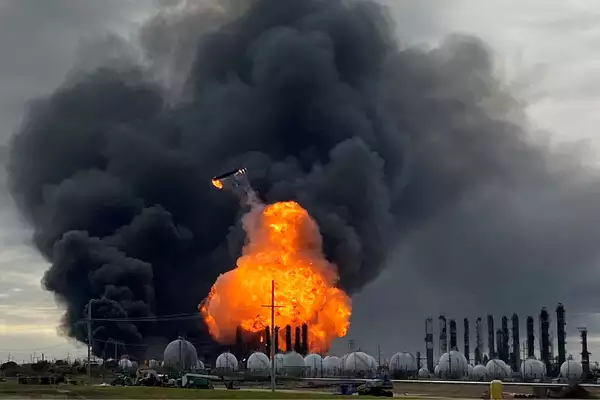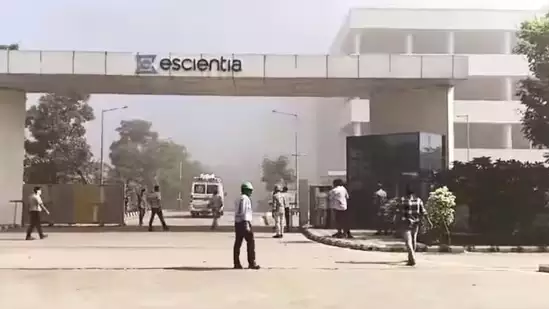A recent explosion at a pharmaceuticals plant in Andhra Pradesh is suspected to have originated from a chemical reactor.
Initiatives and Laws for Chemical Accident Prevention in India
- Environment (Protection) Act, 1986: It empowers the central government to take necessary measures to protect and improve regulation of industrial activities that may cause chemical disasters.
- Factories Act, 1948, 1987: It includes provisions for the safety of factory workers, handling hazardous substances, with stricter safety norms, compulsory safety audits, and on-site and off-site emergency plans.
- The Public Liability Insurance Act, 1991: It mandates that industries dealing with hazardous substances have insurance coverage to provide immediate relief to the affected parties in case of an accident.
- Manufacture, Storage, and Import of Hazardous Chemicals Rules, 1989: These rules outline safety measures for the handling, manufacturing, and storage of hazardous chemicals.
- They also mandate that industries prepare and maintain Material Safety Data Sheets (MSDS) and conduct regular safety audits.
- The Chemical Accidents (Emergency Planning, Preparedness, and Response) Rules, 1996: It mandate the formation of Crisis Groups at the central, state, and local levels to manage chemical disasters.
- National Disaster Management Guidelines – Chemical Disasters, 2007: Issued by the National Disaster Management Authority (NDMA), these guidelines provide a framework for the prevention, preparedness, and response to chemical disasters.
Examples of Chemical Disasters in India
- Bhopal Gas Tragedy (1984): A highly toxic gas, methyl isocyanate (MIC), leaked from a pesticide plant owned by Union Carbide Corporation.
- Delhi Gas Leak (1985): It led to the release of oleum gas. While the impact was not as severe as Bhopal, it raised significant concerns about industrial safety in densely populated areas.
- Vizag Gas Leak (2020): A leak of styrene gas occurred in Visakhapatnam, Andhra Pradesh, led to mass evacuations and highlighted lapses in industrial safety protocols.
- Gajuwaka (Vizag) Chlorine Gas Leak (2012): It led to the hospitalization of over 100 people, the leak was traced to faulty storage cylinders.
- Thane Chemical Explosion (2011): The explosion resulted from improper handling of chemicals used in manufacturing.
Global Initiatives for Chemical Accident Prevention
- United Nations Environment Programme (UNEP): Through initiatives like the Strategic Approach to International Chemicals Management (SAICM), UNEP works to achieve the safe use of chemicals.
- International Labour Organization (ILO) Code of Practice on Prevention of Major Industrial Accidents (1991): It was to guide governments, employers, workers, and their organizations in the prevention of major industrial accidents.
- The code covers aspects like hazard identification, risk assessment, safety management systems, and emergency preparedness.
- OECD Guidelines for Chemical Accident Prevention, Preparedness, and Response: It serves as a reference to prevent chemical accidents, emergency planning, and effective response.
- International Programme on Chemical Safety (IPCS): A joint initiative by the World Health Organization (WHO), UNEP, and ILO, the IPCS aims to establish the scientific basis for the safe use of chemicals.
- Seveso Directive (European Union): It sets out stringent regulations for controlling major accident hazards through risk assessments, safety management systems, emergency planning, and land-use planning to prevent chemical accidents.
Ref: Source
| UPSC IAS Preparation Resources | |
| Current Affairs Analysis | Topperspedia |
| GS Shots | Simply Explained |
| Daily Flash Cards | Daily Quiz |
Frequently Asked Question:
What do the Chemical Accidents Rules, 1996 entail?
These rules mandate the formation of Crisis Groups at central, state, and local levels to manage chemical disasters, ensuring coordinated emergency planning and response.
What is the significance of the National Disaster Management Guidelines – Chemical Disasters, 2007?
These were issuedby the National Disaster Management Authority (NDMA), these guidelines provide a comprehensive framework for the prevention, preparedness, and response to chemical disasters in India.
How are the Seveso Directives for chemical accident prevention?
Seveso Directive and OECD Guidelines focus on preventing chemical accidents through risk assessments, safety management systems, and emergency planning.



